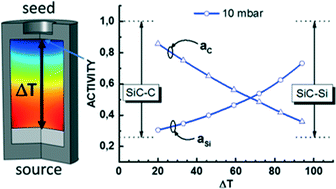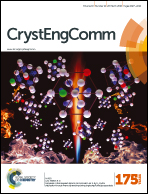A first step toward bridging silicon carbide crystal properties and physical chemistry of crystal growth
Abstract
The links between the occurrence of a given silicon carbide (SiC) polytype and crystal growth conditions have been mainly empirically described. Although studies are a little more advanced, a similar description can be applied to point defects and especially dopants in the crystals. We propose a method to determine such links, based on a coupled thermodynamic and mass transport model, where SiC is treated as a solid solution. We implemented such an approach to the case of the seeded sublimation growth process, which is currently the industrial bulk growth process for SiC single crystalline ingots. The computation of both Si and C activities in the SiC crystal, between the SiC–C and SiC–Si two-phase equilibria, allowed first the assessment of the SiC crystal chemistry and second the linking of SiC–C and SiC–Si chemistry with the growth process parameters. We demonstrate that depending on the temperature, pressure and a temperature gradient, the activities of Si and C in the crystals can be described and tuned. The case of cubic polytype (3C-SiC) formation is specifically discussed. Its stabilization requires a high Si activity and a low C activity in the SiC crystal, meaning that the synthesis conditions must be close to the limit at the SiC + Si phase boundary.



 Please wait while we load your content...
Please wait while we load your content...